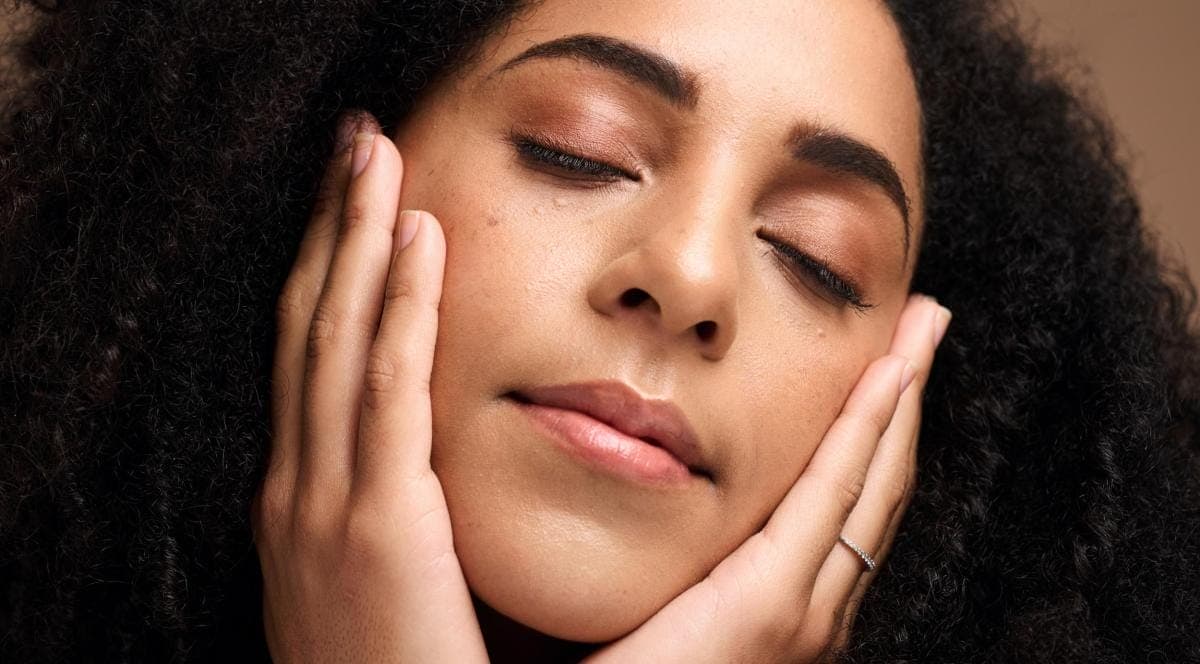Skincare
Can Touching Your Phone Then Your Face Really Cause Breakouts?
Does touching your phone and then touching your face lead to breakouts? It’s a common concern many people have, especially as smartphones become such a regular part of daily life. With phones being in constant contact with various surfaces, it’s worth considering whether this simple act of using your device could contribute to skin issues. Given that our phones carry bacteria and oils from our hands and the environments we interact with, it’s a valid question.
Our phones come into contact with many surfaces, from countertops to our hands, which themselves may not always be clean. Each time we touch our phone, there’s a chance that we transfer bacteria, oils, and dirt onto it. When we then touch our face, this grime can make its way to our skin. The oils and bacteria we transfer can clog pores, especially when left on the skin for long periods, leading to breakouts or exacerbating existing skin conditions like acne.
It’s important to note that breakouts often occur when pores are blocked by oils or dead skin cells. The bacteria that live on the surface of our skin can invade these blocked pores, creating the inflammation that leads to pimples. When you touch your phone and then touch your face, you are introducing more bacteria and oils to your skin, potentially increasing the risk of these blocked pores becoming infected.
Phones as a Source of Bacteria
Phones carry a surprising number of bacteria, which has been confirmed by several studies. In fact, one study found that the average smartphone is ten times dirtier than a toilet seat. This might sound shocking but think about all the places where your phone has been throughout the day. It likely spends time in your pocket, on surfaces in public places, or even on the bathroom sink. Combine that with the warmth from the phone’s constant use, and you’ve got a breeding ground for bacteria.
When we bring these bacteria-laden devices close to our face, especially when making phone calls or sending quick texts, they can easily transfer to our skin. The warmth and oils from our skin create the perfect environment for these bacteria to thrive. Once bacteria find their way into the pores, they can trigger inflammation, leading to whiteheads, blackheads, and other forms of acne. While it’s true that not all bacteria cause breakouts, the types found on your phone can make a difference in whether or not you experience pimples.

How Your Hands Factor In
Another thing to consider is how often you touch your phone and then your face. Throughout the day, you might pick up your phone with hands that are not always clean, which can further transfer dirt and oils. Even if you wash your hands regularly, oils naturally produced by the skin can still accumulate. When you press your phone against your cheek or forehead during a call, you’re essentially creating a direct pathway for those oils and bacteria to reach your skin. This can aggravate pre-existing acne or introduce new breakouts.
Beyond direct contact, consider how often you touch your face without even realizing it. On average, people touch their face around 23 times per hour. Every time you do so after handling your phone, you risk spreading whatever bacteria or oils were on your phone directly onto your skin. While the occasional touch may not seem like a big deal, repeated interactions throughout the day can increase the likelihood of breakouts.
Why Skin Types Matter
It’s also worth mentioning that the likelihood of experiencing breakouts from touching your phone and then your face varies depending on your skin type. Oily and combination skin types are generally more prone to acne, as the excess oil provides the perfect medium for bacteria to thrive. When additional oils and bacteria from your phone are introduced, these skin types may react more dramatically, leading to breakouts.
For those with dry skin, the issue may not be as prominent. However, this doesn’t mean you’re entirely in the clear. Dry skin can still develop breakouts, particularly if the skin barrier is compromised or if there is an accumulation of dead skin cells on the surface. When bacteria and dirt from your phone come into contact with this dry, compromised skin, it can still lead to clogged pores and irritation.
Cleaning Your Phone Regularly Helps
Given the number of bacteria and oils that can collect on your phone, regular cleaning is one of the best ways to minimize the risk of breakouts. Using disinfectant wipes or alcohol-based cleaners specifically designed for electronics can help keep your phone as bacteria-free as possible. Be sure to clean not only the screen but also the back and sides, where bacteria can also accumulate. Some people even invest in ultraviolet sanitizers that use UV light to kill bacteria on the phone’s surface.
It’s important to clean your phone consistently, ideally once a day, to reduce the number of bacteria it carries. Many people overlook this simple habit, but it can significantly impact your skin’s health. Beyond cleaning your phone, you can also consider using a hands-free device, like headphones or a Bluetooth headset, for calls. This reduces the amount of time your phone spends in contact with your face, cutting down on the transfer of bacteria and oils.

Taking Care of Your Skin After Phone Use
Even with regular phone cleaning, it’s still important to maintain a good skincare routine, especially if you’re prone to acne. Cleansing your face regularly, particularly after using your phone for an extended period, can help remove any oils or bacteria that may have transferred. Using a gentle cleanser that suits your skin type will help keep your pores clear and reduce the risk of breakouts.
Additionally, you may want to be mindful of how you hold your phone. Avoid pressing it directly against your skin for long periods and try to keep your hands as clean as possible throughout the day. You can also consider using a facial mist or toner throughout the day to refresh your skin and remove any dirt or oil that may have accumulated.
Looking at the Bigger Picture
While touching your phone and then your face can certainly contribute to breakouts, it’s not the only factor that plays a role. Acne is often influenced by a combination of things, including genetics, hormones, diet, and overall skincare habits. Even with a perfectly clean phone, breakouts can still occur due to internal factors like hormone fluctuations or stress.
That said, minimizing external triggers like bacteria and oils from your phone can help reduce the frequency and severity of breakouts. By paying attention to how often you touch your face after using your phone and keeping your device clean, you can make a significant difference in your skin’s overall health.
What Else Can You Do?
If you’re someone who struggles with acne, especially after frequent phone use, consider incorporating products that specifically target acne into your skincare routine. Ingredients like salicylic acid and benzoyl peroxide can help unclog pores and prevent the buildup of bacteria on the skin. Additionally, using non-comedogenic products—those that won’t clog pores—can further prevent breakouts.
It’s also beneficial to pay attention to the type of material your phone case is made from. Some materials can trap bacteria more easily than others, so choosing a case that’s easy to clean can help reduce the bacteria transfer. Leather, for instance, is more difficult to clean and can harbor bacteria, while plastic or silicone cases are easier to wipe down regularly.

When to Seek Professional Help
If you find that your breakouts persist despite cleaning your phone and adjusting your skincare routine, it might be time to seek advice from a dermatologist. Acne can sometimes be a sign of underlying issues that require professional treatment. Dermatologists can help identify any specific triggers for your breakouts and offer treatments such as topical medications or even prescription treatments if necessary.
In some cases, persistent acne could also be related to environmental factors or other lifestyle habits. A dermatologist can work with you to determine if other elements, such as diet or stress, may be contributing to your breakouts. Either way, addressing the issue early can help prevent more severe skin problems down the line.
By staying mindful of how you use your phone and taking steps to care for your skin, you can reduce the likelihood of breakouts caused by bacteria transfer. Regular phone cleaning, hand washing, and a solid skincare routine can go a long way in maintaining clear, healthy skin.




